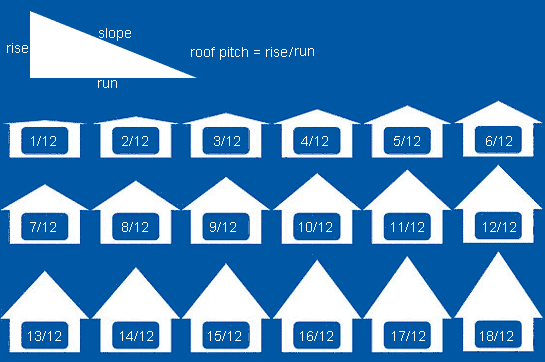Under construction
The following tools estimate approximate price based on the the area of a roof, as well as the amount of materials necessary to construct a roof of a given area.
The following quote is only estimation of the roof material with the labor cost of reroofing and can differ depending on complexity and state of the structure. It doesn’t include structural repairs, for example plywood change or rafter replacement.
The “House Base Area” is the area of land that the house covers. To calculate Base area multiply width by the length of the house.
In cases where a roof has a complex shape, such as in the image to the right, measuring the dimensions and areas of each part of the roof to calculate total area will result in a more accurate measurement of area.
The calculator cannot account for complex shapes based on a measurement of square footage alone. The Area Calculator can be used to calculate the area of a variety of simple shapes that together can comprise the area of the roof. Using the aggregate area of these simple shapes can yield a more accurate roof area to be used with the Roofing Material Calculator.
The most common roofing materials used in Canada include metal tile, shingles, membrane roofing, and ceramic tile, all of which have different life spans. Metal tile can last 40 years, shingle roofs typically have a 15-30 year lifespan, and membrane roofs usually last only 5-15 years. Although ceramic tile roofs are expensive, they can have a life span of over 100 years.
Roof Pitch

Roof pitch is the measurement of a roof’s vertical rise divided by its horizontal run. It is often compared to slope, but is not exactly the same. In the United States, a run of 12 inches (1 foot) is used, and pitch is measured as the rise of the roof over 12 inches. For instance, a 7/12 roof pitch means that the roof rises 7 inches for every 12 horizontal inches. Outside of the U.S., a degree angle is typically used.
Roof pitch is a determining factor for cost of the roof, as well as the roof area, and the type of materials used. It affects walkability as well as drainage, and roofs in areas of high rain or snowfall tend to have steeper pitches.
Roof pitch affects the actual area of the roof. Depending whether the roof area is measured horizontally (possibly from a drawing or photograph), a correction factor is necessary to determine the actual area of the roof. Given pitch and a horizontal area measurement, multiply the horizontal area by a correction factor corresponding to pitch, provided in the table below, to determine the actual area of the roof to be used in the Roofing Material Calculator. While it is possible to estimate the amount of necessary materials using only the total roof area measurement, as can be seen from the table, depending how large the pitch of the roof, the actual area of the roof can differ by up to 2.236 from the measured total area at a pitch of 24/12. As such, while it can be cumbersome, measuring the area and pitch of each part of the roof and multiplying by the corresponding correction factor will result in the most accurate estimate of necessary roofing materials.

